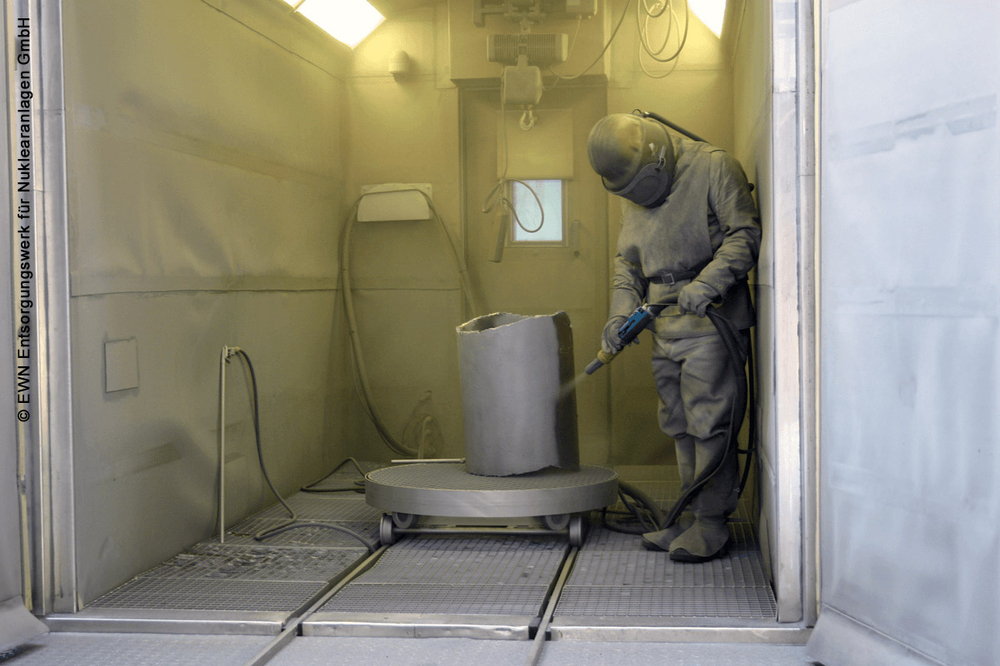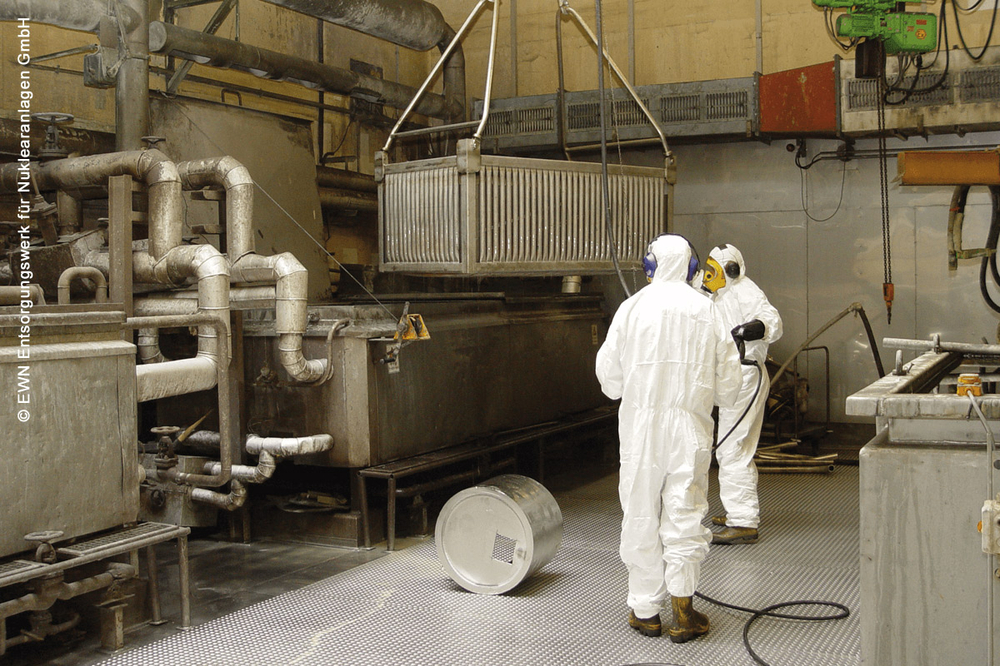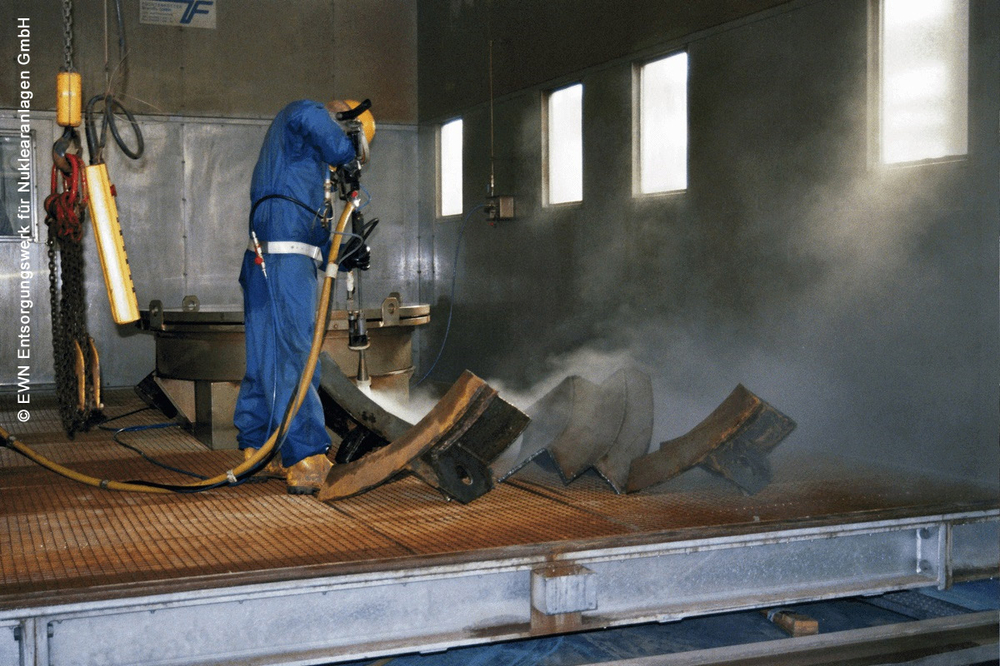Decontamination techniques
Decontamination techniques are used to remove adherent radionuclides (contamination). This improves radiation protection and is a key prerequisite for clearance.
Systems and rooms are decontaminated prior to the start of dismantling in order to reduce workers’ exposure to radiation. This is often done by removing not only the radionuclides deposited on the surface, but also a thin layer of the material itself. In this way, any radioactive substances that have penetrated into cracks or have been deposited in inaccessible areas are also removed.
Dismantled components are often decontaminated again for final clearance, i.e. their release from the scope of regulatory control.
Causes and treatment
Contamination may be caused by direct contact with a radioactive medium (e.g. primary water). Surface contamination may also be caused by the airborne dispersion of radionuclides within the facility building. If the contamination is superficial, it may be sufficient to brush or jet-wash the surfaces of the material. If it has penetrated to a greater depth, part of the surface must be removed (several micrometres to several millimetres). The process parameters are chosen to ensure that the new surface has no contamination.


